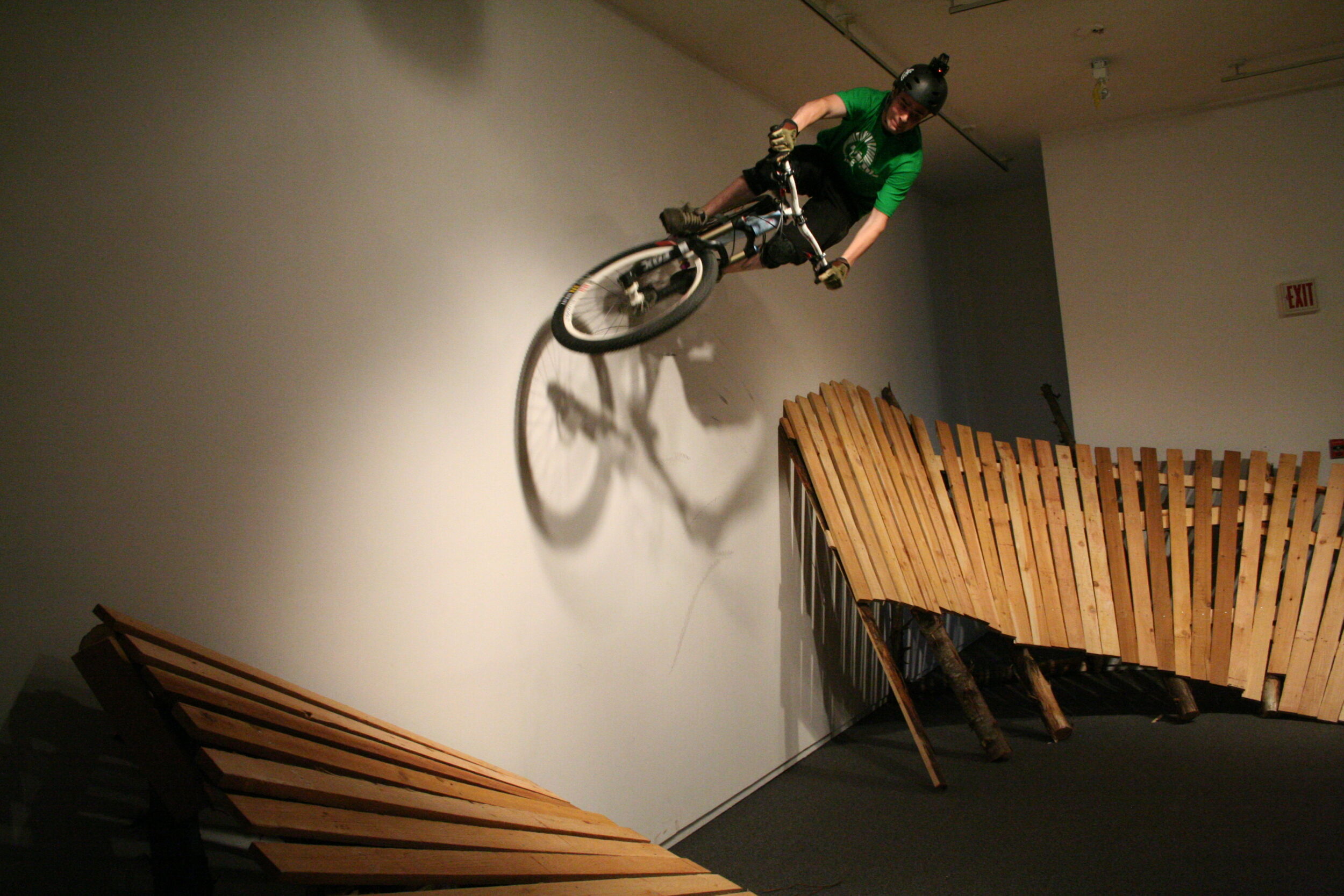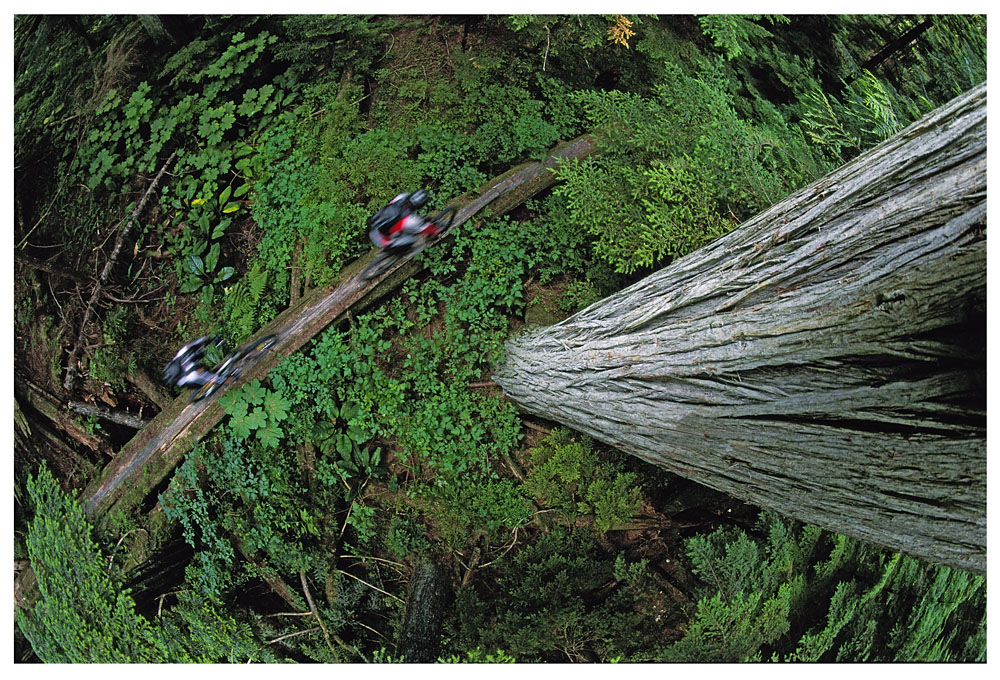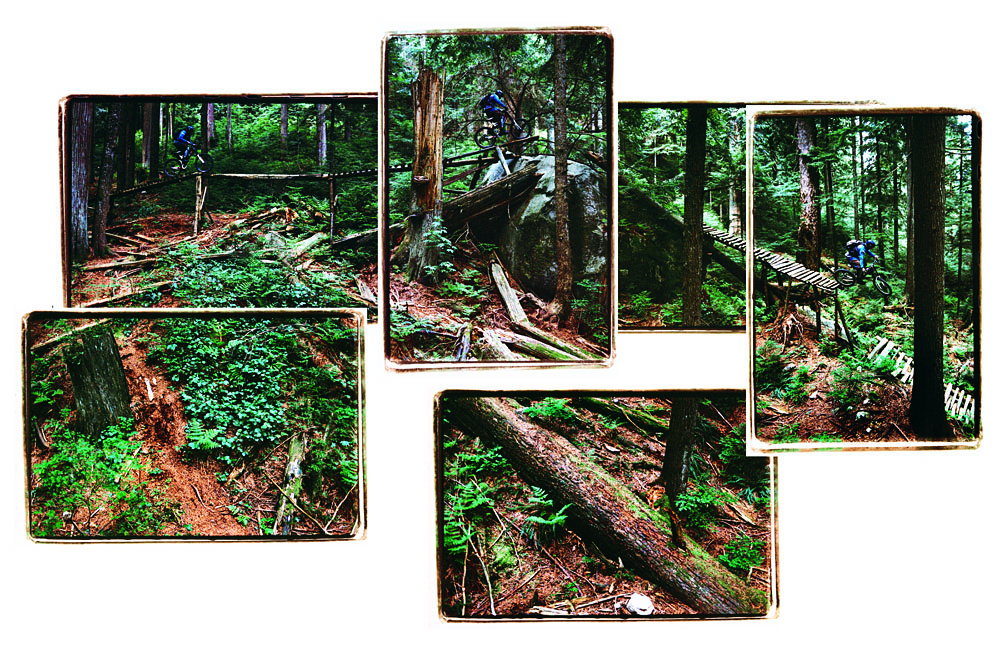Flow: The Progression Of Freeride Mountain Biking In North Vancouver
Curated by: Ian Verchere
Amid the second-growth rainforest bounding the North Shore of Vancouver, out of sight to most Vancouverites, an isolated terrain has provided for an explosive evolution in sport: mountain biking has progressed farther and faster here than anywhere else in the world.
In the 1980s and early 90s, bikers began to traverse Vancouver’s mountain slopes over a network of fallow trails and logging roads buried under second-growth forest. Obstructed and slowed by felled trees, blackberry bushes, rocks, and washouts, these bikers initially overcame obstacles with simple, jerry-rigged ramps and bridges, opening old trails in ways impossible before. As skill levels increased, trail building became more innovative, and teeter-totters, drops, banked walls and elevated boardwalks were introduced. In a few years, simple A-frame structures that helped riders up and over fallen logs progressed to sophisticated constructions integrating natural elements.
Bikes were modified and adapted to local conditions: terrain and skills pushed equipment development, and better equipment and bolder terrain contributed to increasingly complex skills. Very quickly, local bike and accessory manufacturers became world-renowned, while manufacturers in other parts of the world branded their bikes as “Shore-tested” or “Built for the Shore.”
Flow: The Progression of mountain biking on Vancouver’s North Shore traces the local evolution of this internationally growing sport, exploring one of North Vancouver’s most famous exports. The exhibition incorporates a built, rideable environment in the gallery as well as photographs by Sterling Lorence, the sport’s preeminent documentary photographer.
Flow is organized by Ian Verchere, a Vancouver-based producer and writer. Verchere’s first book V0N 1BO, a collection of essays on life at Whistler, was published by Douglas and McIntyre in 2006.


